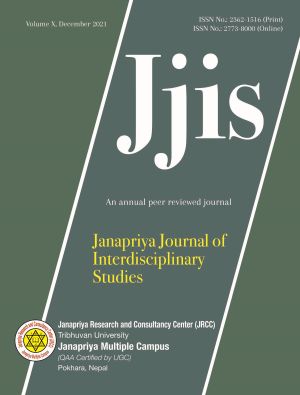Solid Waste Generation and Management Practice in Pokhara
DOI:
https://doi.org/10.3126/jjis.v10i01.42616Keywords:
Composition, landfill, organic, population growth, reusable, solid waste generationAbstract
This study aimed to identify the current status of solid waste generation and its management in Pokhara. For this purpose, eleven institutions were chosen from all the 33 wards of Pokhara Metropolitan City for collecting the information regarding waste generation and composition. Further focus group discussions were carried out with five private sectors involved in the solid waste management system of Pokhara. The per capita waste generation rate was found to vary from minimum value 0.016kg and to a maximum value of 0.082 kg. along with the average of 0.035 kg. The analysis of waste composition showed that landfill matter accounted for the highest fraction, making up 39.23 % of landfill waste, 35.14% of reusable/recycle waste and 25.63% of organic waste. The challenges of solid waste management are increment of waste generations as well as per capita generation with respect to population growth and catchment area, scarcity of garbage collection vehicle, very difficult to manage dead animals, lack of proper management of medical and Industrial waste and hazards waste, health problem of solid waste management staff. The results can be used as part of the waste management planning purpose for the concerned stakeholders




